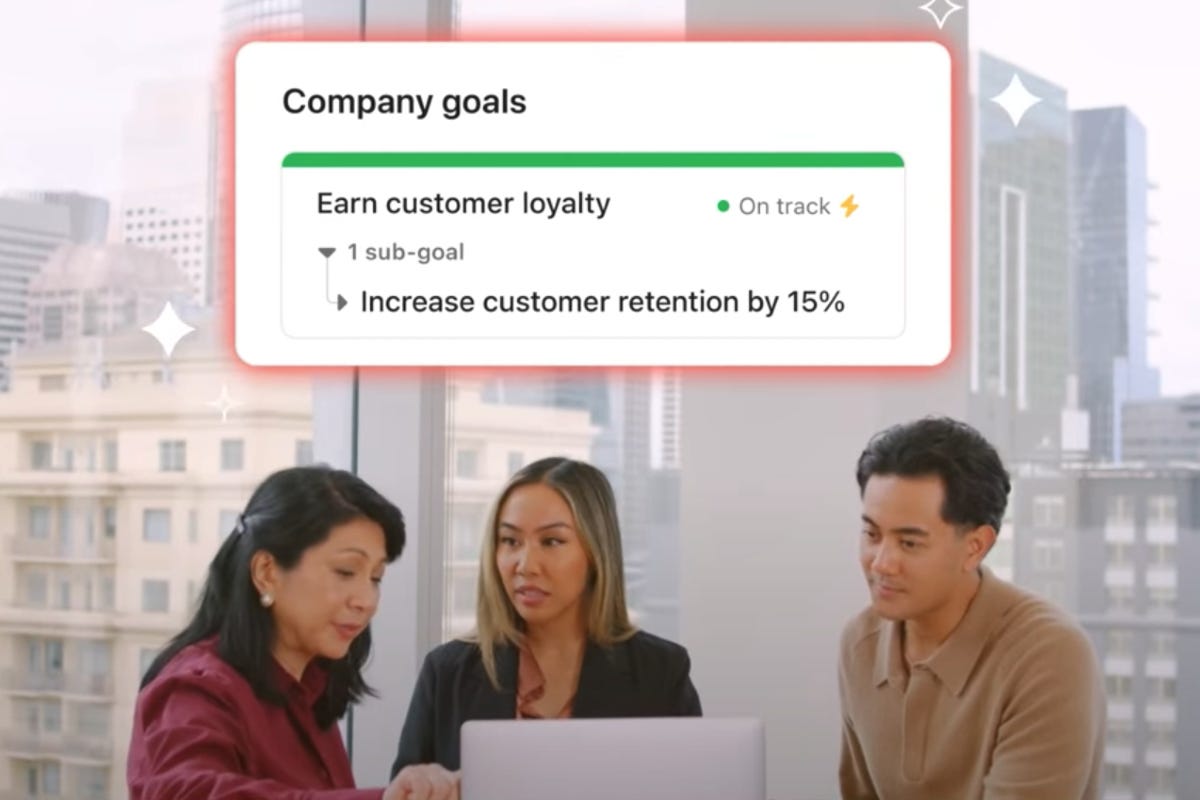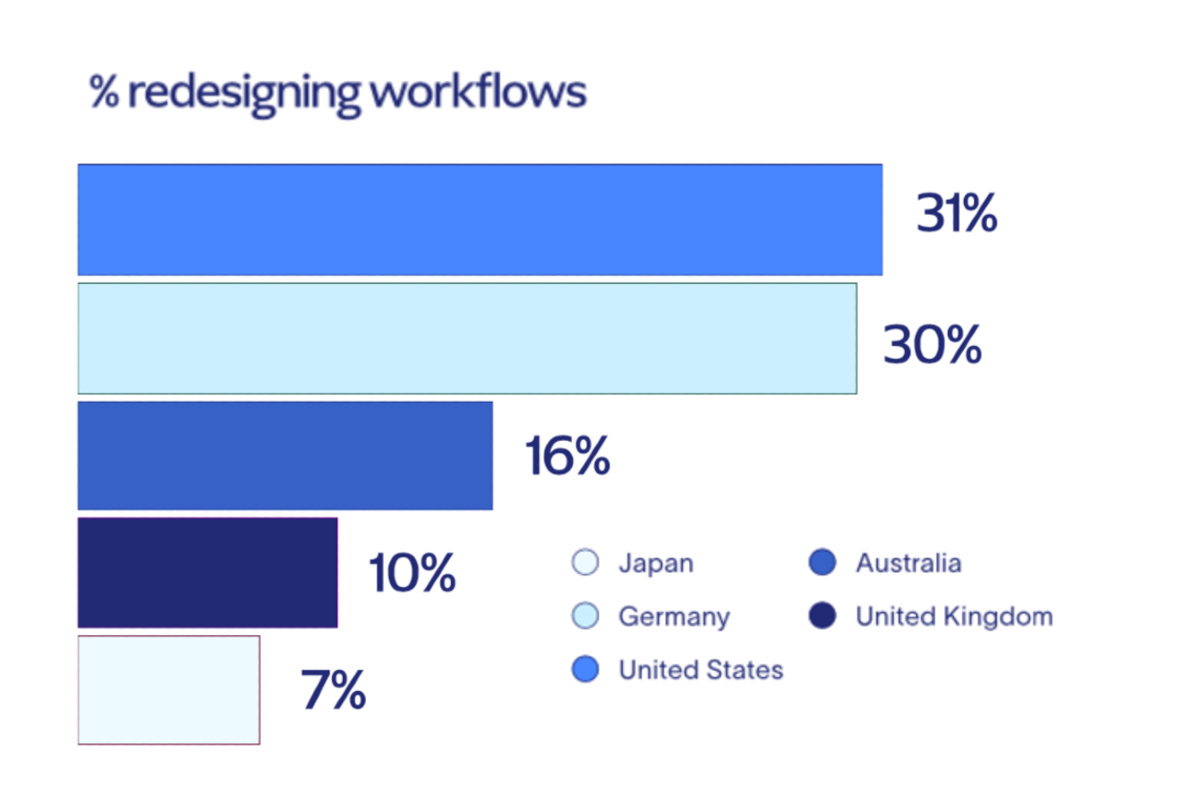AI Agents to Handle 43% of Work in Three Years, Asana Study Finds
A new Asana Work Innovation Lab report reveals how autonomous AI agents will redefine management, performance, and corporate structures
As artificial intelligence (AI) matures from tool to teammate, a new study from Asana’s Work Innovation Lab warns that workplaces are on the brink of a seismic transformation. The research, titled The 2025 Global State of AI at Work, shows that knowledge workers are already delegating 27% of their workload to AI today. That figure is expected to rise sharply:
34% within one year, as organizations integrate AI into planning, coordination, and reporting tasks;
43% within three years, as AI agents begin to manage workflow dependencies, performance tracking, and basic decision-making.
By 2030, workers expect AI to go beyond task automation to influence higher-level decisions:
49% believe AI will evaluate employee performance;
42% expect AI to recommend hires;
40% anticipate AI will shape corporate strategy;
48% foresee flatter organizational structures as AI assumes supervisory roles.
This steady escalation signals a fundamental rethinking of how human and digital labor will coexist. The report also finds that 76% of workers view AI agents as a fundamental shift in how work is performed. Yet, only 36% understand how to use them effectively, and just one in five organizations has successfully scaled the deployment of agents.
This imbalance between enthusiasm and readiness is what Asana identifies as “AI debt”: the growing risk of automating broken systems before redesigning them for AI integration.
Mark Hoffman, Work Innovation Lead at Asana, told TechJournal.uk that organizations must correct inefficiencies before handing work to machines.
“The most successful adopters are the ones who fix the fundamentals first,” he said. “If you don’t address the underlying problems, AI will just automate the mess.”
He added that companies rebuilding workflows around human–AI collaboration—known as AI Scalers—are already reporting measurable gains in productivity, coordination, and process redesign.
Smarter Governance
The findings are based on extensive research conducted by Asana’s Work Innovation Lab, in partnership with Prolific and RepData. The 2025 survey gathered responses from 9,236 knowledge workers across the United States, the United Kingdom, Germany, Japan, and Australia between February and August 2025.
All respondents were professionals using computers for at least half of their work, ranging from individual contributors to executives at the director level and above. Surveys were administered in local languages via Qualtrics, with Asana customers excluded to ensure neutrality and impartiality.
The survey revealed notable regional differences. The United States reported the highest AI weekly usage at 81%, though digital exhaustion rose by 8%. The United Kingdom followed with 56% usage but slower adoption overall, while Germany recorded a moderate 67% uptake and a more cautious pace. Japan had the lowest usage rate, at 35%, prioritizing precision over speed, while Australia showed a 59% usage rate but a sharp 16% rise in workload intensity.
AI Scalers stand out for their willingness to rethink how work gets done, while most firms still fall short. Global comparisons show clear contrasts:
United States: 31% transformation rate leads globally.
Germany: 30% but fewer Scalers—redesign alone isn’t enough.
United Kingdom: only 10%, still adapting slowly.
Japan: 7%, keeping legacy systems.
Australia: 12%, showing steady but cautious change.
Each country faces unique cultural and organizational barriers, underscoring that AI transformation depends as much on social readiness as technological capacity.
Hoffman emphasized that success with AI agents depends not on the sophistication of algorithms, but on the structure and governance that surround them. He pointed to the report’s data, which showed that few companies have established ethical frameworks or oversight mechanisms for their agents, thereby increasing the risk of security lapses and unclear accountability.
The gap between governance and ownership remains one of the central barriers to progress: executives worry about control and data misuse. At the same time, employees fear losing credit or accountability for work completed by AI. Hoffman argued that empathetic leadership, clear communication, and proper training are required to close that divide.
Training Matters
Hoffman said one of the least discussed but most vital capabilities is “delegation literacy”—the ability to decide what to assign to AI.
“The research shows right now that most people don’t know when to delegate to AI and what to delegate to AI,” he said. Effective delegation, he added, means breaking complex tasks into smaller steps, assigning suitable pieces to agents, and then recombining those outputs into a complete deliverable.
He warned that training remains patchy, even as expectations accelerate. Many employees are delegating to AI without a shared playbook for quality, security, or accountability.
Building that literacy, Hoffman said, turns AI from a perceived threat into a trusted partner, helping organizations realize measurable productivity gains.
Market Shake-Up
As the AI agent market expands, Hoffman foresees classic market dynamics at work.
“There’s definitely going to be consolidation,” he said. “You’re seeing bigger, more established companies also roll out AI agents, and some of them are probably going to want to purchase some of those startups because they don’t have the internal development capacity to build it themselves.”
“At the same time, some companies will struggle to differentiate themselves in that marketplace and will struggle to grow, and so those companies will disappear,” he said.
In the near term, Hoffman expects the strongest offerings to be those that integrate with existing enterprise ecosystems and span end-to-end processes.
“The winners in the short term will be organizations that can integrate with other tools, and that can do cross-functional, end-to-end workflows in a really effective way.”
Future Outlook
Hoffman estimated that most employees will work with only five to 20 AI agents in the future. That number could increase, he said, if some agents begin managing others—but such complexity would heighten operational risks.
“As these networks expand, governance will become one of the biggest leadership challenges over the next five to 10 years,” he added.
He expects adoption to vary widely across roles and industries. Employees in coordination-heavy jobs may adopt more agents sooner, while others progress more slowly. Still, he said, the focus must remain on responsible oversight, reliability, and human oversight.
Looking ahead, Hoffman believes the next decade will determine whether AI stabilizes or disrupts modern workplaces. He expects organizations to strengthen governance and transparency—what he refers to as a trust architecture for AI collaboration.
On the horizon of Artificial General Intelligence (AGI), Hoffman was candid about uncertainty.
“I’m not sure about the timeline for AGI,” he said. “It’s hard to know, like if AGI is two years away versus 40 years away.”
His best guess today: “I do think it’s probably more like 10 to 20 years away. Even then, it will still take organizations a long while to change how they think about risk, security and accountability, regardless of raw capability.”
In his view, the future is not humans versus machines but a disciplined partnership in which agents coordinate workflows and surface insights, while people provide creative direction and ethical judgment. The firms that thrive will redesign work with that partnership in mind—before they scale the technology.





